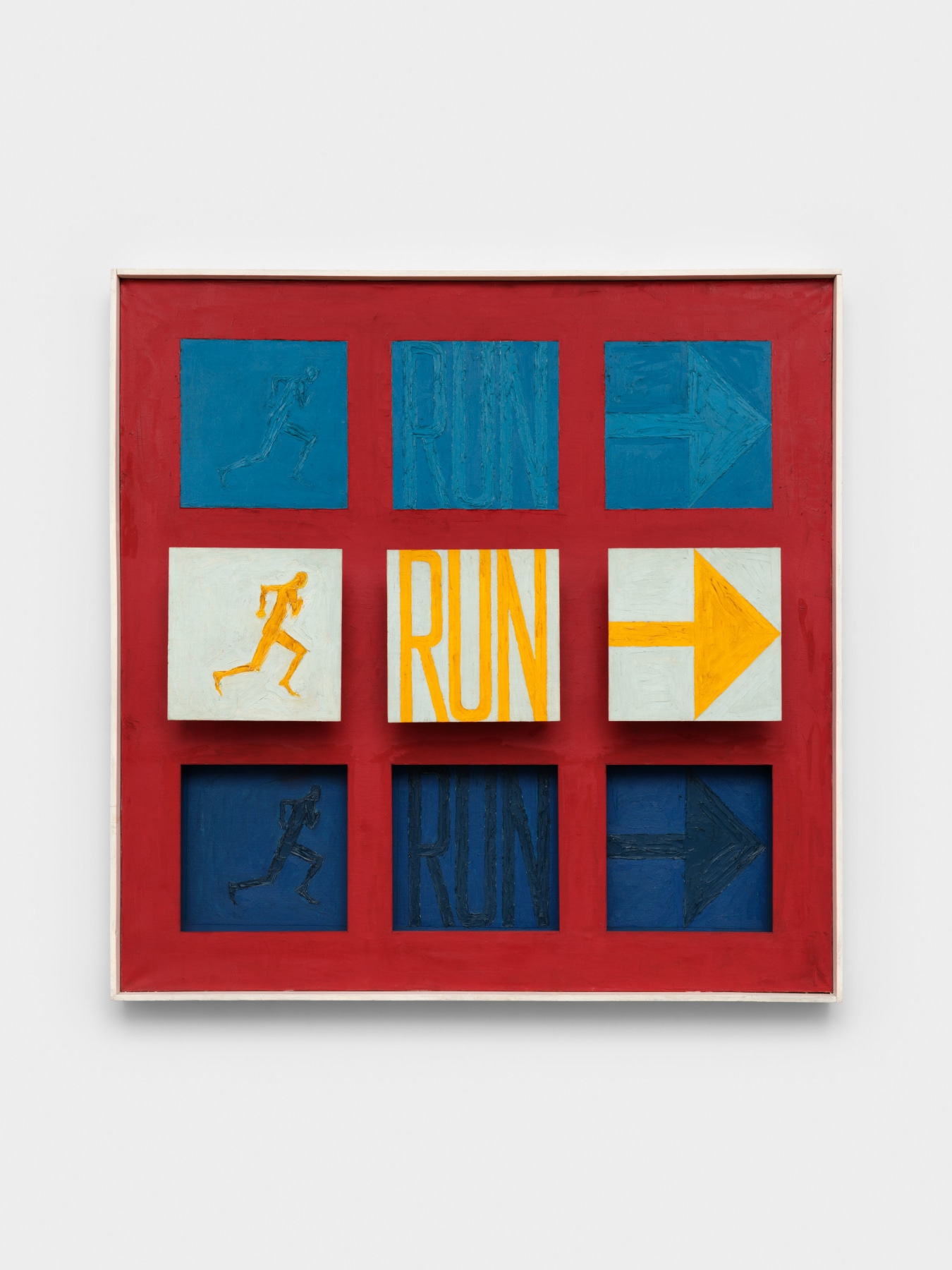Run I, 1962

Sol LeWitt
Run I, 1962
oil on canvas, painted wood
61 x 61 x 8 in. (154.9 x 154.9 x 20.3 cm)
"'The work of Eadweard Muybridge has had a great impact on my thinking.' LeWitt noted in the catalogue for his mid-career retrospective at the Museum of Modern Art, in 1978. Muybridge's sequential photographs of humans performing everyday movements–– ascending stairs, picking up a piece of paper, running––modeled a conceptual approach that informed a central tenet of LeWitt's career: 'The idea becomes a machine that makes the art.'
[…]
"The earliest extant painting series in LeWitt's oeuvre are canvases from 1960 containing nested squares or rectangles in contrasting tonalities with figures carved into a field of thick paint using the handle of the brush or other sticklike implement, or crudely painted in a primary color set off against a murky field. The figures, frozen in motion, run, box, and somersault, and are all drawn from LeWitt's copy of The Human Figure in Motion. They present action outside of narrative and conjure rime in a static image; from just a single "frame" abstracted from a Muybridge sequence, we understand the preceding action and that to come.
[…]
"LeWitt began to expand the picture plane into real space in 1962 with constructed paintings like Run I, in which squares recede into coffers or project as platforms from the canvas, offering true spatiality rather than the illusion of depth. Here, LeWitt assimilated multiple sources. He recalled "understanding ... what Jasper Johns was doing, with three-dimensional things were three dimensional and two-dimensional things were two dimensional. I thought this was a very good idea. Then I thought, 'Well, it should be applied to Josef Albers.'" Also based on a Muybridge photograph, Run I communicates the idea of "run" through the word itself, an arrow pointing in the direction of motion, and a running figure. LeWitt soon eliminated painted emblems and words, opting for empty boxes––some receding into the picture plane, others protruding assertively into the viewer's space."
- Extracted from “Serial Logic: Muybridge as Muse” by Kirsten Swenson in Eadweard Muybridge & Sol LeWitt, Craig F. Starr Gallery, 2019
The preeminent American artist Sol LeWitt (b. 1928, Hartford, CT, d. 2007, New York), whose pioneering style defies categorization, is well-known for his wall drawings as well as his many variations of open cube structures, complex forms, and works on paper. A critical departure from the tradition of object-based art, he believed in the primacy of the idea, famously stating: “The idea becomes a machine that makes the art.” LeWitt executed his first wall drawing for Paula Cooper Galleryʼs inaugural show in 1968. In November 2008, “Sol LeWitt: A Wall Drawing Retrospective” opened at the Massachusetts Museum of Contemporary Art, where it will remain on view for 35 years. Recent one-person presentations include those at the Institute of Contemporary Art, Miami, and the Modern Institute, Glasgow. LeWittʼs works are in numerous public collections, including the Museum of Modern Art, the Whitney Museum of American Art, the Solomon R. Guggenheim Museum, the Art Institute of Chicago, the San Francisco Museum of Modern Art, the Centre National dʼArt Moderne Georges Pompidou, Paris, the Stedelijk Museum Amsterdam, Turinʼs Castello di Rivoli, the Moderna Museet Stockholm and the Tate Gallery, London.